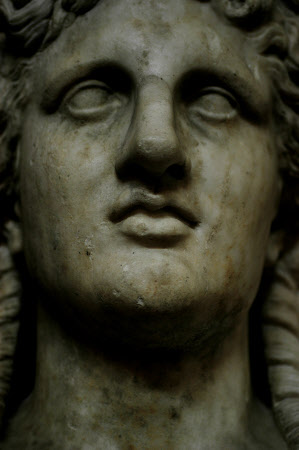Terminal Bust of Apollo
Roman
Category
Art / Sculpture
Date
Unknown
Materials
Parian marble
Measurements
280 x 333 x 240 mm
Order this imageCollection
Petworth House and Park, West Sussex
NT 486326
Summary
Parian marble, Terminal Bust of Apollo, a Roman adaptation of a Greek original terminal bust of Apollo. The original is either of the 4th or 5th century BC. The marble head has a heavy oval face, domed forehead and a strong rounded chin. The small flat eyes are set under brows which are heavier at the outer corners. The mass of hair is brought from the top of the head in waved locks, which are caught into a fillet, from whence it falls down the back in eight waved masses, while in front the hair is arranged in untidy curls on the forehead. From behind the ears to below the shoulders fall two stiffly twisted curls on either side. Coarse grained Parian marble with crystals.
Provenance
By descent, until the death in 1952 of the 3rd Lord Leconfield, who had given Petworth to the National Trust in 1947, and whose nephew and heir, John Wyndham, 6th Lord Leconfield and 1st Lord Egremont (1920-72), arranged for the acceptance of the major portion of the collections at Petworth in lieu of death duties (the first ever such arrangement) in 1956 by H.M. Treasury.
Marks and inscriptions
20 (painted on front of bottom of bust)
Makers and roles
Roman, sculptor


